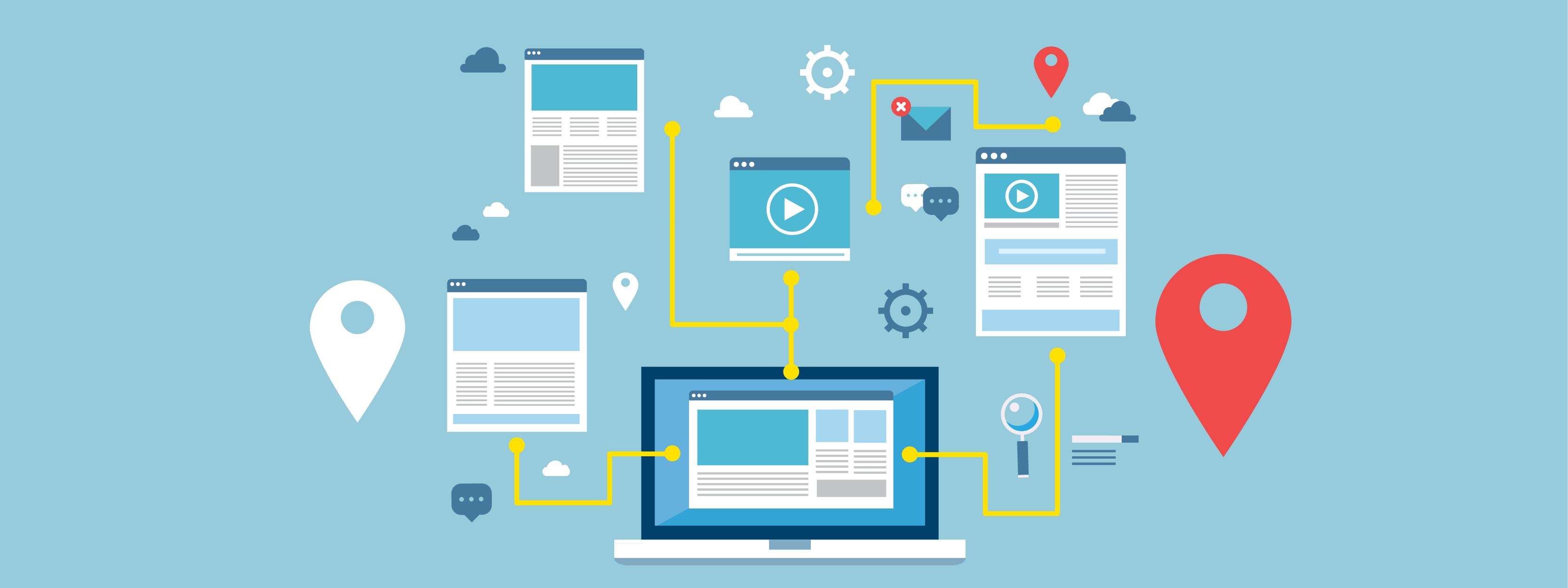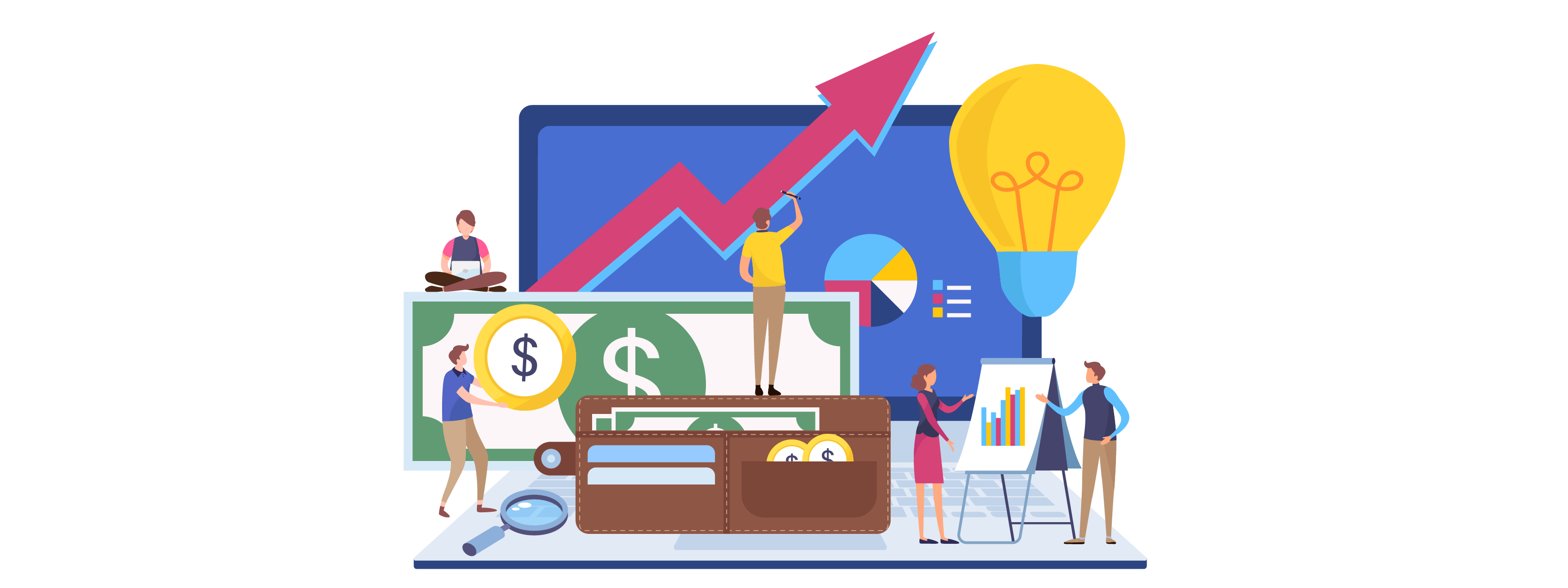
As a business owner, your dream is to have a consistent increase in annual revenue. But how do you go about making that happen every single year? Local SEO may be the answer to the question you never thought to ask.
But first things first.
Are you selling to your customers or providing them with quality customer service and incredible products?
If you have been selling to your customers, then you will have a hard time boosting your sales and consequently, your company’s bottom-line.
A recent survey by Gallup found that 17 percent of small business owners consider marketplace issues a challenge.
Some of these issues include competition, marketing, reaching out to customers, and…the internet.

Image Source: Gallup
But isn’t selling products or services the reason why you opened your business?
Yes, it is, but are you doing it right? Gone are the days when salespeople pitched, pushed, and peddled goods with an exclusive sales focus.
Back then, they used tricks and techniques that pressured the consumer into begrudgingly making purchases.
The methods were okay in the past because they had an information deficit. They relied solely on advice and information given by the salespeople.
The seller, on the other hand, made no extra effort to understand the customer and their needs. They just wanted to make a sale, end of story.
The age of the internet has since changed this and in a big way.
By the time the customer is approaching the salesperson, they have most probably done their homework. They know what product(s) they want, how much it costs, and where to find them well before they can make the purchase.
They have read and analyzed user reviews, compared prices, quality, and found out other people’s experiences with your product.
The salesperson no longer has the seller’s leverage. Sixty-seven percent of the buyers will do their research online while 83 percent of them will access digital channels even during late purchase stages.
Digital channels have now become the go-to place for validating information that your sales team is offering customers.
There is, therefore, a need to help your buyers get through all these stages of the purchase process using local search engine optimization (SEO).
What Is Local SEO?

Local SEO (Search Engine Optimization) is the process of optimizing your website for a specific local audience. It is, thus, one of the most powerful tools a local business has at their disposal.
If you lack local SEO for your business, then you are missing out every time someone searches for services and products you offer online.
A study by HubSpot found that 46 percent of Google searches are local, 89 percent of people use their smartphones to search for local business once a week, 58 percent search daily, and out of that search, 72 percent of them will visit a store within five miles after the search.

Image Source: HubSpot
If your local Google SEO is poor, then your existing and potential customers will not find you. But before you can understand what local SEO is, let’s first define SEO.
SEO is simply how you drive organic traffic to your site. You do this by using keyword research tool and identifying keywords that relate to the product(s) or service(s) you are offering and integrate them into the content you use on your website. You can even use these keywords when tagging images and videos online.
SEO works to satisfy the ever-changing algorithms of search engines through maintaining your presence online. With quality SEO, you increase your company’s chances of being on the first page of search results.
Strategically ensuring your SEO is working means engaging in conversations/forums that revolve around your industry. It also means having your business on local directories, having your customers provide reviews, being active on your social media profiles, and having internal and external links that direct customers to your website.
You have to create numerous avenues all leading to your site so that customers have a better chance of finding you.
SEO increases your business awareness and, in the end, search engines recognize it, place you at the top of the first page, and potential customers get to find you more easily. A high ranking will lead to more sales and therefore, increased revenue.
Local businesses deal with a lot of competition. So many factors determine your success!
With local SEO, you can optimize your online presence to generate traffic from relevant local searches.
Searches can happen on all search engines including Google, Yelp, Bing, etc. Most of them happen on Google, though.
The figure below shows what happens when you search for a product or service near you on Google.

Image Source: Search Engine Land
The top 3 searches that appear after the ads are called the local pack. Google tries to give you the closest and best option for your search query.
A study by Moz found that 44 percent of people will click on the local searches and only three will request the page to load more local listings.

Image Source: Moz
The results show that people who are looking for local businesses will find answers on the first three listings provided.
Your business should be among these top results if you want to drive more traffic to your site. Using professional B2B SEO services and managing local SEO can help you out with that.
How to Boost Your Revenue Quickly with Local SEO

If you are ranking on the first three local search results, then you are definitely on the right track to increase your yearly revenue. Imagine all the traffic from both desktop and mobile (which, by the way, makes up to 50 percent of all traffic) visiting your store after a simple online search.
With local SEO, you are looking to rank on local searches. According to Moz, your business must be in proximity to the searcher for you to be featured in the Google local pack (the top three local search results).

Image Source: Moz
You want your business to appear among these three searches, so how do you do it?
1. Be Consistent on All Platforms
To rank higher on search engines, ensure your information is consistent on all your platforms. Your Company Name, Address and Phone number (NAP) must be the same on all platforms on the web.
Your URL must be consistent, too. Google will not trust your site if the abbreviations are different or you have different phone numbers. Accuracy is paramount in local SEO.
Having the wrong NAP will mislead customers, and this will cost you. It’s also vital to include information on the working hours, products/services offered, business specialties, and payment methods.
Google My Business and Bing Places for Business will help you with this. Google My Business is a tool that allows your business profile to appear right when a potential customer is looking for you online.
You can create and update your profile, stand out from the competition, and lead customers to you.
With Google My Business, you can add as much information as you want, including media, a profile photo, hours, attributes (perks of visiting the business), your business URL, when you opened the business, a public phone number, and an interactive map to your location.
You must watch out, though, because people can suggest edits to your information. Get it right the first time so that random people cannot make changes. Log in regularly to confirm that all details are correct.
Google My Business allows customers to leave reviews. To encourage people to continue leaving positive reviews, respond directly on the current ones.
Responding tells the client that you are thankful for the support. It also makes the review stand out and influence others to check out your products.
Respond to negative comments, too, and assure them you are working towards a solution. Do not be rude, because you will look unprofessional. Who wants to buy from a rude business owner?
You can also keep your customers engaged by sharing helpful information on news, offers, specials events, dates, and time. Update your profile with new posts and photos. You can also discover how people are interacting with your profile and from what site they got there!

Image Source: Google
It’s also important to ensure that your business information is consistent on all search engines and social media sites.
On your website and most social media sites, ensure that people can call you directly. Seventy-six percent of local search results end up in a phone call and 1 in 3 people will do a mobile search right before they visit a store. Eighteen percent of the mobile searches lead to purchases, too!

Image Source: HubSpot
So, what happens if you fail to update your business information? Here are a few things. Spoiler alert: none of them are pretty:
- Potential customers will go to your competitors’ site. If your business is not listed online, the average consumer will find an alternative product provided by your competitor.
- Reviews are equal to word of mouth recommendations to your site. According to research, 95 percent of shoppers read reviews online before purchasing; 93 percent determine if a business is good or bad based on reviews; 72 percent will not act unless they have read reviews; you increase conversion rates by 270 percent if you display reviews and 63 percent of consumers are likely to purchase from a site if it has reviews and ratings.
- Failure to list your business correctly could lead to unscrupulous people making duplicate pages of your website. They may give your customer the wrong information so that they call or visit the wrong address.
- Not having your business online makes your business go unnoticed.
- To ensure accuracy and consistency across regions, consider incorporating residential proxies, allowing you to simulate local searches from different locations and maintain a robust local SEO presence.
2. Invest in a Good CRM and Automate
Linking marketing automation to your Customer Relation Management (CRM) can help you increase revenue quickly. To keep track of all your business contacts and emails, you need a good CRM.
This app will help you track products your customers have purchased, what they are interested in, where they work, and so much more.
A good CRM helps you manage relationships with customers. It’s an internal network that allows you to understand your clients, customers, and employees.
There are many CRMs you can choose from, including Salesforce, Highrise, Infusionsoft by Keap, and HubSpot.
They are all great for managing contacts, but the purchase will depend on what you want your CRM to do for you.
Some can organize email conversations with clients and customers so that you can stay in touch with them, track potential customer interactions as they move from lead to deal, gather information on your customers, help you get leads on potential customers, or make deals and create automated workflows.
Linking up CRM and automation:
- Helps your sales team track leads from the moment they interact with your product to buying and beyond.
- You can tell which marketing campaigns and activities are generating revenue and which ones are not
- Your sales team will be in a better position to nurture leads through the sales funnel
- Your customers will get a seamless experience with all your platforms
What does this have to do with local SEO, you ask? Well, it’s quite easy. A good CRM will help you track where most of your visitors come from (and it can do it better than Google Analytics). This way, you will know what to invest in to make your website even more visible to your local audience. Plus, you can use it to automate a lot of the tasks related to local SEO.
3. Nurture Your Leads
Local SEO increases your visibility by improving your rankings. Google checks the user query and location before giving the search results.
Anyone who clicks on the link, which directs to your site, is a potential lead. It means that your marketing efforts, online and offline, are working properly and people are visiting your site. However, turning these leads into buying customers requires a bit of work.
Lead nurturing will require you to use optimized content to guide the buyer through the purchase funnel.
You will be building a personal relationship with your potential customers by listening to their demands, acting on their complaints, and meeting their needs.
You slowly turn prospective customers into buying customers by educating them and creating awareness.
However, according to research, 96 percent of users that visit your site are not ready to buy yet. Some of them are just peeking into your website and leaving, while others are interested in your product and want to purchase.
Those who come to your website with little purchasing intent will require more convincing on the benefits of buying your services or products. Forty-eight percent of businesses agree that nurturing most of their leads requires them to use long cycle nurturing with influencers.

Image Source: Ascend2
Before making a pitch, you must provide your lead with educational materials through the three stages of the buying cycle: awareness, consideration, and decision.
To correctly nurture a lead, you need information about them and this is where you leverage the power of marketing automation.
Marketing automation helps take care of different tasks including prospect scoring, activity tracking, and nurturing leads.
Lead nurturing is the final part of the local SEO “cycle”. Think about it for a second. After you turn a lead into a customer, they are very likely to go back to where they found you (Google or another search engine) and leave a review. In turn, this review will up your rankings and help even more prospects find you. Cyclic, right?
According to a survey by Salesforce, 80 percent of consumers want consistent interactions across channels as they go through the various buying stages.

Image Source: Salesforce
Being available to understand and attend to customer needs at the right time is daunting, even for a big sales team.
Such a team may have a hard time anticipating customer needs, understanding these needs, and providing personalized experiences to each customer.
Marketing automation helps with a wide range of tasks during lead nurturing. You can score leads, track potential customer behavior, and effectively manage email marketing campaigns.
The data you collect from automation helps you pick the quality leads while getting informed knowledge on customers and understanding their needs.
Research shows that 8o percent of marketers that make use of automation have seen an increase in leads while 77 percent of them increased conversions.
Lead segmentation allows you to send personalized messages based on customer preferences and actions.
You can personalize messages by sending behavior-driven emails to your customers from a Marketing Automation Solution. These are messages sent once a customer performs a specific action.
Marketing Automation allows you to send real-time messages that are personalized which strengthen your relationship with your customer. The messages sent are:
- Relevant because they are action triggered
- Engaging because they provide the buyer with useful information like how to use the product, why they should use it, or why they should return to using it.
- Brand building because they encourage user engagement and breed loyalty from customers. Customers will be more likely to become your brand ambassadors if you meet their needs.
- Retentive because when a customer receives personalized services, they will not want to go anywhere else.
- Revenue generators because the customer receives the right message at the right time with the right prompt. Those who have received the message have engaged previously with your brand, and if they are further down the sales funnel, they are likely to make a purchase.

Image Source: Email Monday
Marketing automation leads to improved customer experience and helps you identify good quality leads that will get to the purchase stage of the buying process quickly.
You can use automation to send follow up emails to customers who searched and left before they could make a purchase.
The messages will include a call to action returning to the site. Once your lead reaches a certain threshold, you then send them to the sales team to close the deal.
4. Integrate Social Media into Your Local SEO Strategy
To become a leader in your digital landscape, you must use social media to create brand awareness for your product or service.
Your brand must use most of the platforms regularly to avoid becoming obsolete. Social media allows you to have public conversations with your prospective and current customers. Your customers are on these platforms and you need to be there too.
Now, imagine integrating CRM into the mix. You can see updates, contacts, social circles, etc. from your dashboard.
The CRM will then help you to search using keywords for new leads and provide solutions to customers. Some CRM’s provide you with instant notifications once they identify a lead.
Integrating social media into your CRM helps you leverage local SEO by:
- Getting a better understanding of the needs of your customers through social listening. Data accrued provides insights into your target audience. You can then use this information to provide targeted posts across your networks and add relevance to products. Have an actionable call to action and strategize your SEO goals more effectively.
Let’s say you are a restaurant owner. According to data and insights gained, several people in your city are looking for birthday celebration venues. You have a perfect room for such an occasion, and your restaurant has a menu that can cater not only to the birthday cake but also to the food and drinks. You will then create a social media advertisement depending on the platform you are on, that informs potential customers of the availability of the service. Your ad will include images, a short video showing the room or a previous birthday party, and a link that allows the customer to make reservations.
- Your customers will not only like your page; you will have added value to the relationship from both ends. You will resolve their complaints, offer discounts or recognize them for being loyal customers. On the other hand, the customer will demonstrate loyalty by spreading the word about your awesome product. Also through social media ordering, you can enhance convenience and accessibility for your customers while offering discounts, or recognizing their loyalty.
- You will generate new leads based on keyword targeting, checking potential customer behavior, and being on the lookout for linguistic triggers. You increase the value of leads on your funnel which leads to more purchases and more revenue.
- The CRM gathers information, engages the customer, and acts on their needs. Doing this builds your social reputation and makes the customers your social advocates. When the CRM interacts with your social media, you shape a community that loves your brand, increase the rates of conversion, attracts new and repeat customers, and reduce costs.
You can repurpose content to share it on all your platforms. A video intended for YouTube can be edited for Facebook. You can also create a preview for Instagram, have an image that links to the video on Pinterest, and have a link that redirects to the video on your website.
Make use of influencers when you need to share your messages authentically. Make sure the influencer creates unique, informative, original, and engaging content before hiring them. When they link back to your website, your local SEO efforts will be handsomely repaid.
When local influencers share links to your website, it improves your domain name authority.
You can also have partnerships with other players in the industry. For example, your restaurant can partner with a drinks company to provide customers with a combo meal.
Advertise local events on social media. Post on all your platforms regularly using hashtags to generate interest. Create a page for the event on Facebook, then promote it.
5. Invest in SEO-Friendly Content
Nothing helps you rank higher than SEO-friendly content specifically created for a local audience. Make sure that each and every one of your articles or pages mention the name of your city and/or neighborhood.
Create valuable content that gets social media shares and attracts backlinks through backlink building tools and techniques. SEO content is not something that will bring you results in a couple of days. But the good news is that, when those results come, they will last longer than any ad or campaign. Of course not every company is set up to pump out effective, optimized content themselves. So getting specialists in search engine optimization for local businesses to help out with this is wise.
Wrapping up
It can be tough to stand out as a small local business. It can be even tougher to increase your revenue with limited resources. But local SEO is something that is relatively easy to implement and it doesn’t cost a fortune.
Boosting your local rankings will drive more visitors to your site. Having informative content will keep the customers engaged and ensure they get all the information they need from your site. Thus, they don’t need to bounce back to search results and diminish your credibility.
Improving your local SEO increases organic traffic, helps you gain more quality leads, and increases your revenue.
Combine it with social media and you boost your rankings. Ultimately, your revenue increase is dependent on the relationship you have with your customers and whether you are improving their lives or not.





